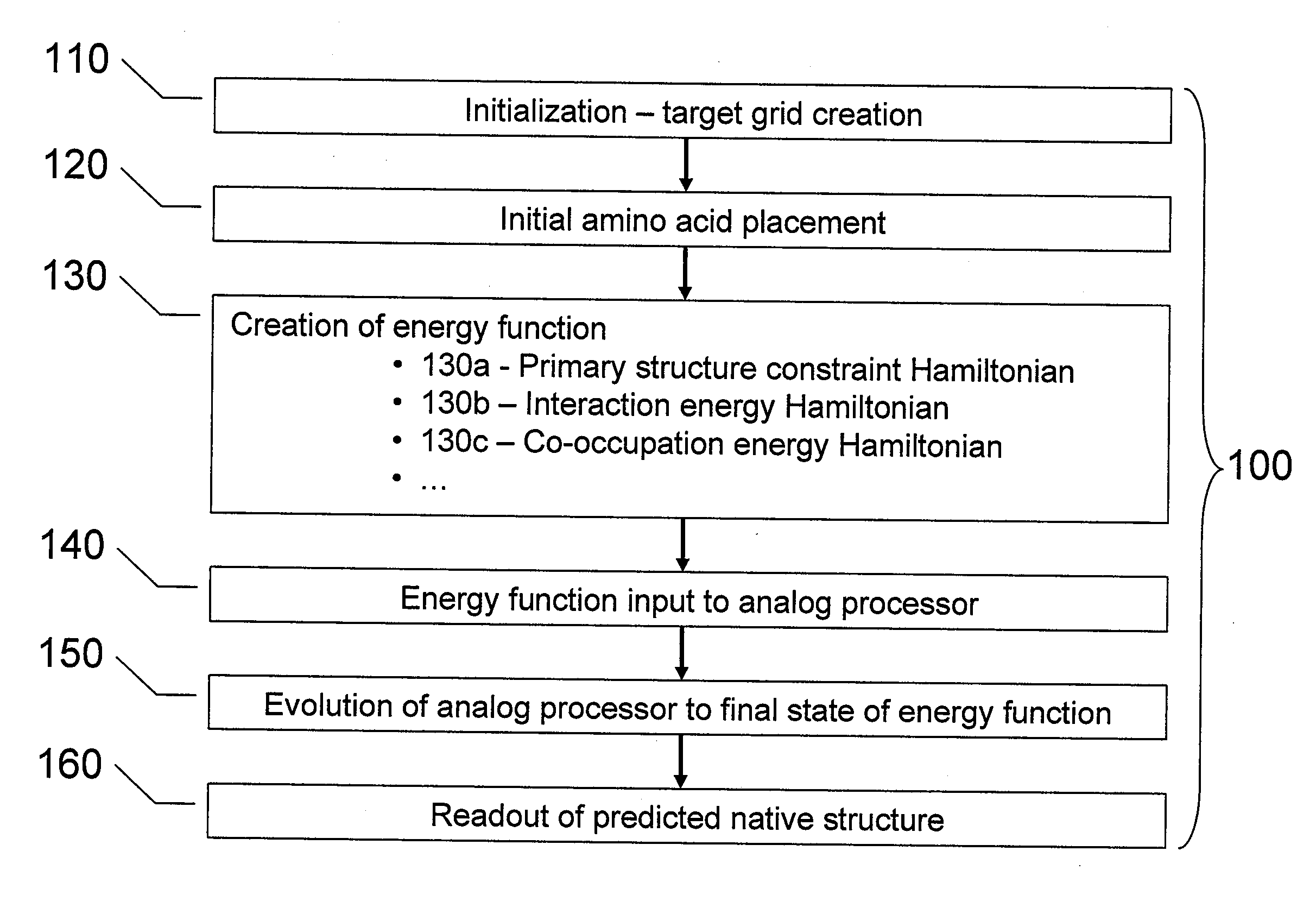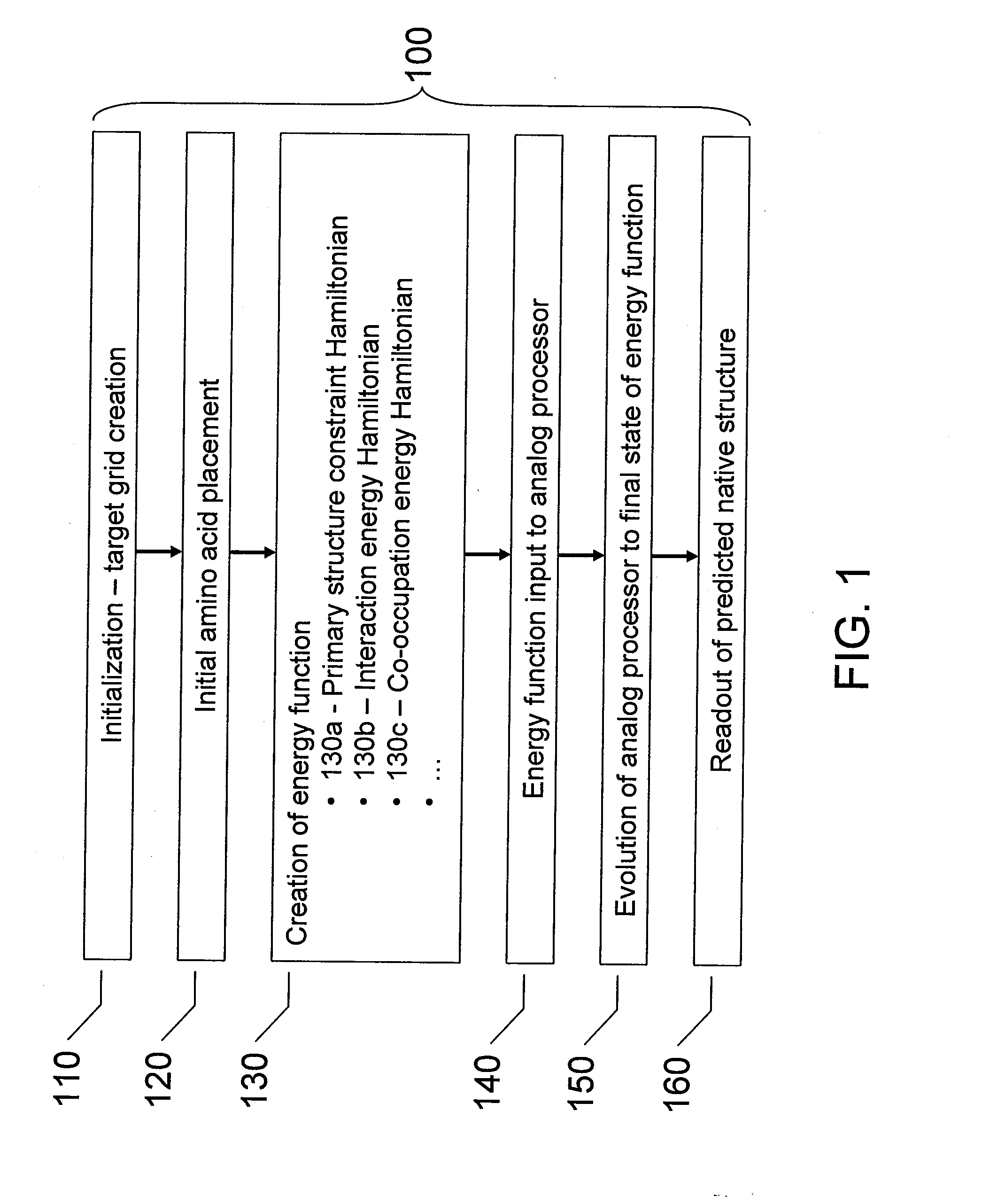Systems, methods and apparatus for protein folding simulation
a protein folding simulation and system technology, applied in the field of systems, methods and apparatus for protein folding simulation, can solve the problems of inability to reliably apply techniques, time-consuming and expensive techniques, and the inability to solve the underlying physical equation, known as the schrodinger equation, to achieve the effect of improving legibility
- Summary
- Abstract
- Description
- Claims
- Application Information
AI Technical Summary
Benefits of technology
Problems solved by technology
Method used
Image
Examples
example 1
[0042]FIGS. 2A through 2E illustrate the simulation of the folding of a protein according to one embodiment of the present systems, methods and apparatus. In particular, FIGS. 2A through 2E depict the determination of the lowest energy spatial configuration of an arbitrary protein, having a primary structure composed of amino acids S, L, Y and N (primary structure=S-L-Y—N), on a two-dimensional lattice or grid. Those of skill in the art will appreciate that although a two-dimensional lattice has been used for ease of illustration, a lattice of any number of dimensions may be used. In particular, a cubic lattice may be useful for predicting the native structure of a protein having more than two amino acids.
Initialization (Act 110 of FIG. 1)
[0043] The number of amino acids in the subject protein is n=4, therefore, a target graph is created, in this case, a two-dimensional square lattice 200 of side length G=8, as shown in FIG. 2A. Since in this example the protein will be embedded ...
example 2
[0071]FIGS. 3A through 3E illustrate another embodiment of the present systems, methods and apparatus, in which the lowest-energy spatial configuration of the protein of Example 1 (S-L-Y—N) is placed on a smaller target graph. In some cases, a smaller target graph may be desirable, and may allow the use of an analog processor having fewer devices.
[0072] In this example, the target graph 300 that is created is a two-dimensional square lattice of side length G=4, as shown in FIG. 3A. Target graph 300 is smaller than target graph 200 of FIG. 2A since, as will be discussed below, the amino acid selected as the first amino acid to be placed is adjacent to the midpoint of the protein and the amino acid will be placed in the central area of target graph 300. Thus, any possible native structure of the protein can be placed in a square grid having a side length equal to the number of amino acids in the protein.
[0073] Each of the vertical and horizontal axes of target graph 300 are labeled ...
PUM
 Login to View More
Login to View More Abstract
Description
Claims
Application Information
 Login to View More
Login to View More - R&D
- Intellectual Property
- Life Sciences
- Materials
- Tech Scout
- Unparalleled Data Quality
- Higher Quality Content
- 60% Fewer Hallucinations
Browse by: Latest US Patents, China's latest patents, Technical Efficacy Thesaurus, Application Domain, Technology Topic, Popular Technical Reports.
© 2025 PatSnap. All rights reserved.Legal|Privacy policy|Modern Slavery Act Transparency Statement|Sitemap|About US| Contact US: help@patsnap.com



